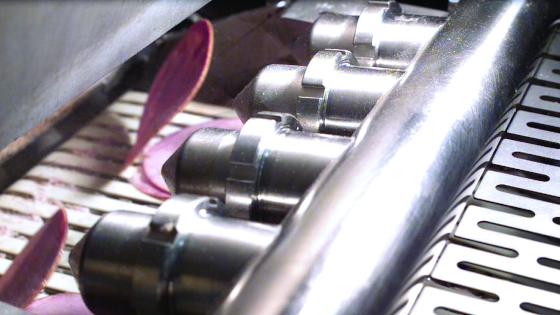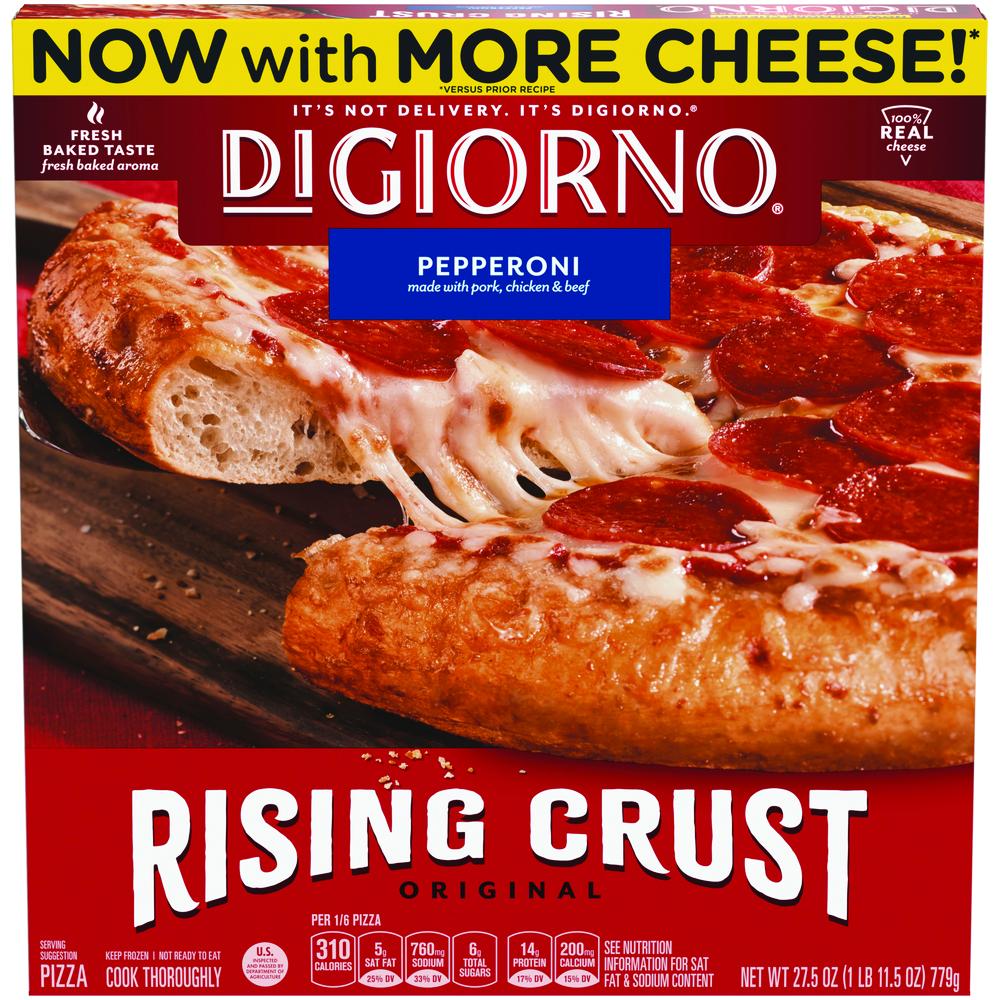Frozen Food Packaging Heats Up
PACKAGING
Over the years, packaging for frozen food has evolved, but the goal of providing high quality frozen foods remains the same. Because of the different degradative reactions that occur when foods are frozen, the technical and design needs for frozen food packaging are unique. The opportunity for design and technology innovation in frozen food packaging continues.
Frozen Food Packaging Is Unique
Packaging for frozen foods is unique because it must prevent altered degradative processes and rates. In the frozen environment, some degradative reactions are reduced, but others increase or are unique to frozen products. Lipid oxidation, browning, nutrient loss, and microbial growth often slow at freezing temperatures. This decrease in the reaction rates allows for some products to have less packaging and fewer preservatives. For example, frozen ground beef sold in a chubstyle package requires a lower package barrier than ground beef that will be stored at refrigerated conditions. Likewise, the product’s shelf life is longer while frozen than while refrigerated.
In addition, Amy’s and Whole Foods frozen entrées are free of preservatives that would be required if they were being distributed, sold, and stored at ambient or refrigerated conditions. Also, many low-preservative or preservative-free products are distributed at frozen temperatures and then sold in refrigerated or ambient conditions at retail with a more-limited shelf life. This appeals to consumers seeking food products that are fresh or contain fewer preservatives as well as to retailers for which freezer case space is a premium. As urbanization and globalization increase, frozen distribution from disparate manufacturing facilities will allow for a more diverse array of these types of product choices.
Of the degradative reactions that increase or only occur at freezing temperatures, freezer burn is a significant concern. Freezer burn occurs due to the difference between the water activity of a product and that of the package headspace. When thaw-freeze cycles occur in distribution/retail or in consumers’ freezers, the initial rise above 0°F causes moisture to be released from the product into the package headspace. When the cycle continues, and the product is frozen again, ice crystals are created by the excess moisture in the package headspace, and sublimed moisture on the product surface also freezes. There are three strategies to reduce freezer burn. One is to reduce or eliminate package headspace through the use of vacuum packaging or skin packaging. This is a common packaging technique for individually vacuumpackaged vegetable patties and chicken fillets. However, some products such as bread are not conducive to headspace reduction because a vacuum would negatively impact product texture. The second strategy is to allow the moisture to escape. This is typically used in low-value products and reduces accumulation of moisture in the package but does not impede moisture loss from the product because the driving force promoting moisture migration from the product still exists and becomes essentially infinite. The third strategy is to retard moisture migration from the product by applying an edible coating to the product. This approach allows for much innovation; for example, edible water vapor coatings can be flavors and spices (such as rosemary or cinnamon) that also retard microbial growth when the product is thawed. Coatings are typically atomized onto a product instead of applied as thick layers. For example, Sono-Tek uses ultrasound to make rapid uniform applications.
Packaging Designed to Freeze
Packaging that protects products in freezers needs to be compatible with low-temperature environments and to facilitate rapid cooling and space efficiency. Paperboard-based folding cartons for frozen pizza are examples of packaging coated with moisture barriers. On this type of packaging, coatings are minimal and designed to ensure that the paperboard can still be recycled or industrially composted as needed. The brittleness of packaging at frozen temperatures is often problematic and requires proper selection, so proper package tests should occur at the temperature of use. For example, when polypropylene bags used to package fresh Costco bread are placed in home freezers, bags are prone to puncture. Likewise, tear strips and perforated packaging operate and tear differently when they are in freezing temperatures. Consumers wishing to remove part of a multipack using the perforation placed on the packaging by a manufacturer will require less pull strength at freezer temperatures, and tears in packaging often occur when perforations are not designed for low-temperature use. Polyethylene-polypropylene copolymers for bags and lidding provide the flexibility and clarity needed while improving puncture resistance in the freezer. The U.S. Food and Drug Administration and other agencies around the world approve packaging for direct food contact based on the temperature and time of contact and on product attributes. For this reason, many packaging materials are approved for frozen food storage that may not be approved for storage at other temperatures. This is because adsorption of processing aids and flavor scalping from products decrease under frozen conditions.
Freezing packaged food often increases product shelf life and thereby reduces food waste. However, when comparative food systems are considered, the energy required to store food at an artificially cold temperature throughout its shelf life results in a much higher environmental impact than the storage at refrigerated or ambient conditions. The environmental impact of a product or package is commonly measured via life cycle analysis (LCA). Product and package LCAs are conducted to assess the relative sustainability of packaged food solutions such as frozen packaged food versus retort processed foods. The freezing of food also requires economic and logistical access to refrigeration, which is not consistently available to all consumers. The high cost and environmental impact of frozen storage and distribution require package design for rapid cooling and space efficiency. Many foods are filled at ambient or higher temperatures and then frozen after filling. Product quality is greatly enhanced by rapid product cooling because many degradative reactions are temperature dependent. However, after filling, packaged products are typically placed in corrugated cases, palletized, shrink-wrapped or stretch-wrapped, and then sent into a frozen storage area for cooling. In some instances, the center of a case on a pallet can take up to four days to cool to frozen conditions. Packaging can be designed for more rapid cooling of products. As an initial measure, shrink-wrap or stretch-wrap with functional holes large enough for airflow and small enough not to impede retaining product on a pallet is effective in allowing more airflow into the pallet load. Pallet location and patterns are then altered to create gaps between pallets and cases; in addition, die-cut holes on corrugated case sidewalls and gaps between cases center flaps facilitate airflow from the freezer into the corrugates cases containing products. Although steel and aluminum conduct heat better than plastic or glass and thus cool faster with less energy, cooling dynamics are not always altered appreciably by material switches because the material thickness used in food packaging are typically low.
The design of frozen food packaging also requires a high degree of space efficiency within the distribution, retail, and consumer storage environment because of the high energy costs associated with maintaining food at freezing temp-eratures. The design of frozen food packaging for consumers has renewed focus. Consumers’ frustration with storing and later finding foods in home chest freezers or upright freezers is high. Moreover, this results in food waste when a product is discovered past its bestif- used-by date because it could not be easily retrieved from the freezer. Improved package design and graphics can make retrieving packaged products from the freezer easier. For example, labeling all sides of packages with reflective ink and visible product dates would facilitate consumers’ ability to retrieve packaged food from freezers.
Frozen Food Gets Steamy
The ability to steam frozen foods in their packaging adds value to frozen food packaging. This capability not only eliminates the need to steam foods in a separate container, it also controls the level of steaming in a way that may not be possible with variable consumer dishware. Packaged foods cooked in microwaves require packaging material that is resistant to high temperatures. Crystallized polyethylene terephthalate is often used as a tray for adequate heat resistance during microwave cooking. There are four ways to achieve venting that facilitate proper steaming in packaging. The predominate method is the use of microperforated holes. Films are produced, then perforated, and then are used as lidstock or as an entire flexible pouch. Microperforation is also used as patches underneath a peelable layer that consumers remove prior to steaming the product. Microperforated holes are often invisible to consumers, do not obstruct print, and are an economical choice. The second method is the use of laser-scored cuts that facilitate controlled venting and steaming of a product. With this method, steam bursts the laser cuts when the product is heated, and the integrity of the package is higher than that of microperforated packaging. Another feature of this type of packaging is consumers’ ability to add seasoning and then reseal the bag, as with the OceanMist Season & Steam product line. A third method employs channels within fin or back seals that vent air/steam via the seal area of flexible pouches. And the fourth method is essentially a mesh tray within a tray, which mimics steaming on stovetops.






